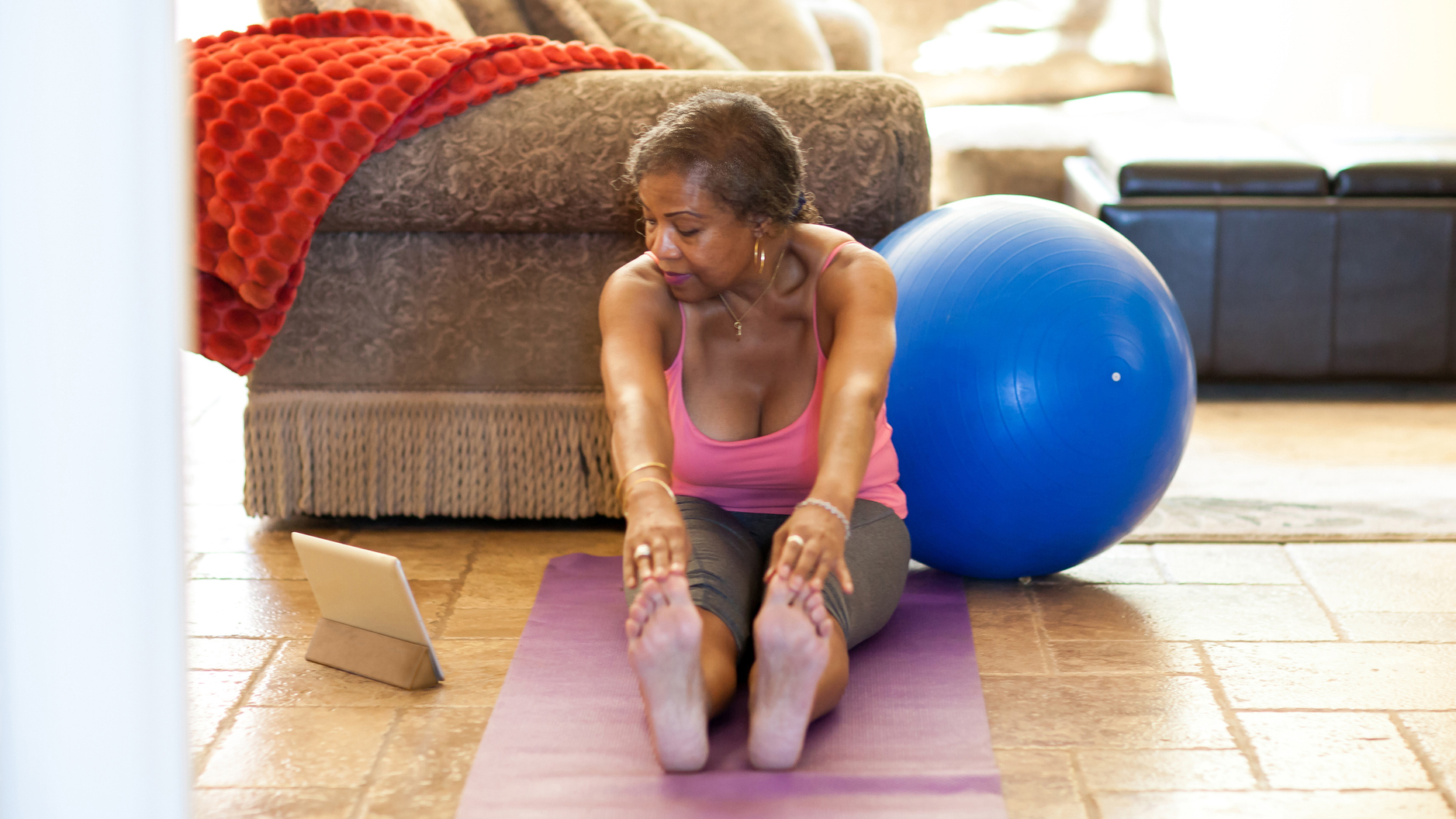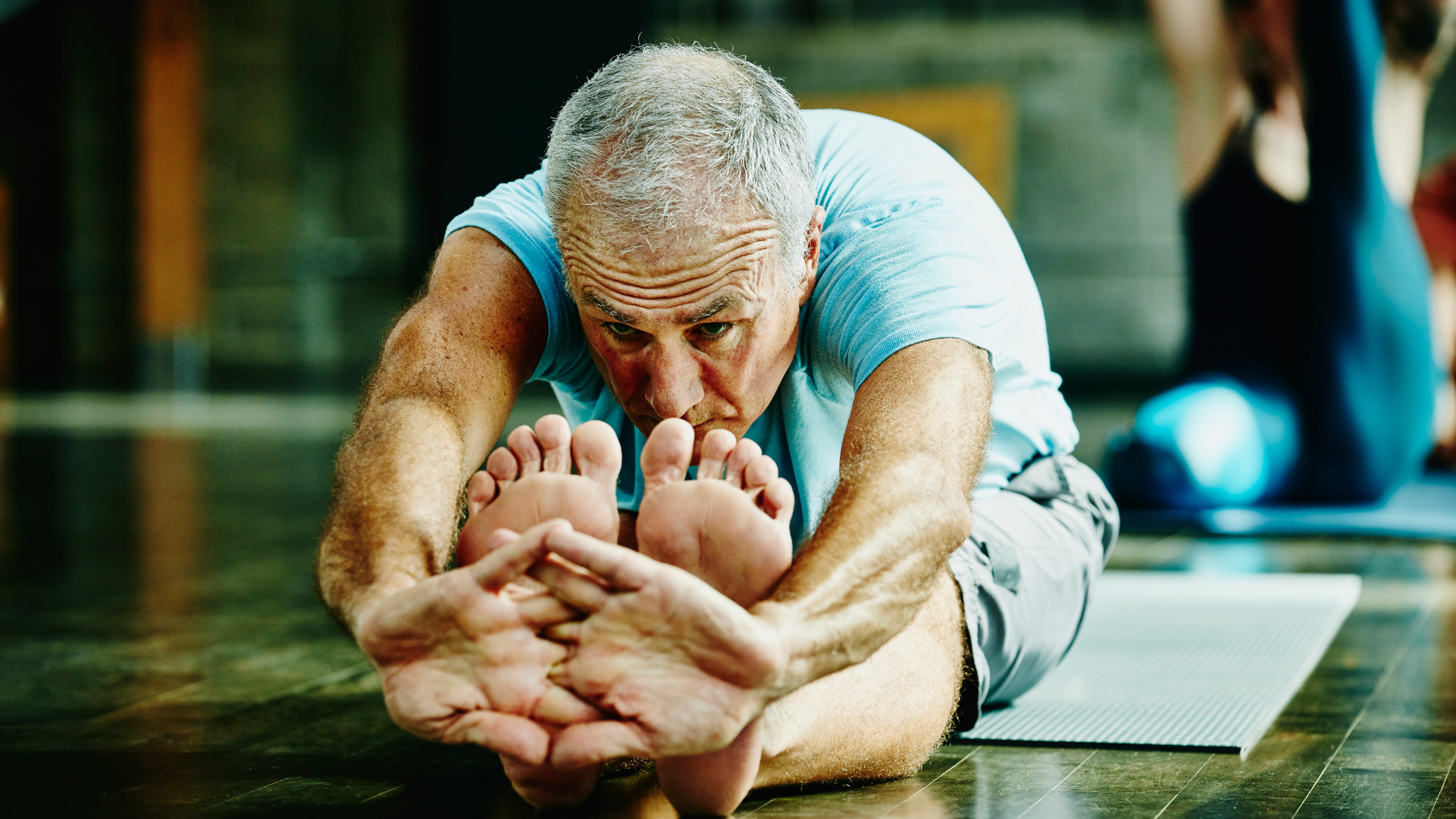Over 60? Here's how to lower your blood pressure and slow your body's aging
Stretching, in addition to lengthening your muscles, can also reduce blood pressure better than a brisk walk


You know we love a good stretch. Whether you're practicing your vipassana on one of the best yoga mats or you're just spending ten minutes loosening your muscles after a run, there's nothing better than a good stretch. For one thing, it's immensely satisfying. For another, it reduces your risk of injury in the future. And thirdly, it's one of the best tools we have when it comes to fighting the telltale signs of aging.
One of those signs of aging is an increased risk of high blood pressure. Hypertension, which can often be a precursor to heart disease and other cardiovascular risks, tends to trend upwards as we age. The UK's NHS has "over 65" listed as one of the potential causes of high blood pressure.
One study, published by researchers from Imperial College London, said: "The increase in blood pressure with age is mostly associated with structural changes in the arteries and especially with large artery stiffness. It is known from various studies that rising blood pressure is associated with increased cardiovascular risk.
"All evidence indicates that treating the elderly hypertensive patient will reduce the risk of cardiovascular events."

Exercise can reduce our risk of blood pressure, but as we age, our ability to exercise with the intensity we used to is greatly reduced. Low-impact exercises like a brisk walk or a session on one of the best elliptical machines are an age-friendly way to reduce blood pressure. However, one recent study has found stretching beats even fast walking when it comes to lowering blood pressure in older adults.
The research, published in the Human Kinetics Journal, examined 40 men and women at an average of 61.6 years of age. Half were set to a brisk walking programme for eight weeks, while the other half were told to do regular stretching. The research eventually came to the conclusion that "An eight-week stretching program was superior to brisk walking for reducing blood pressure in individuals with high–normal blood pressure or stage 1 hypertension."
Start your week with achievable workout ideas, health tips and wellbeing advice in your inbox.
In addition, your range of motion naturally decreases as you age and your muscles waste away due to atrophy. Maintaining healthy, supple muscles is absolutely crucial, and stretching regularly will keep you as mobile as you ever were. You can also strengthen your muscles with calisthenics, weights or a set of the best resistance bands.
How to get started with stretching
This reduction in blood pressure was made after a dedicated stretching programme, so it's best to follow a regular routine. Our guide to stretching exercises is a great place to start.
Alternatively, if you're interested in trying yoga, it's a practice which heavily involves slow, supple stretching exercises to strengthen mind and body, providing all the blood-pressure reducing benefits of stretching with the additional benefit of learning mindfulness skills and practices. You can check out our guide to doing yoga over 50 here.
Matt Evans is an experienced health and fitness journalist and is currently Fitness and Wellbeing Editor at TechRadar, covering all things exercise and nutrition on Fit&Well's tech-focused sister site. Matt originally discovered exercise through martial arts: he holds a black belt in Karate and remains a keen runner, gym-goer, and infrequent yogi. His top fitness tip? Stretch.
